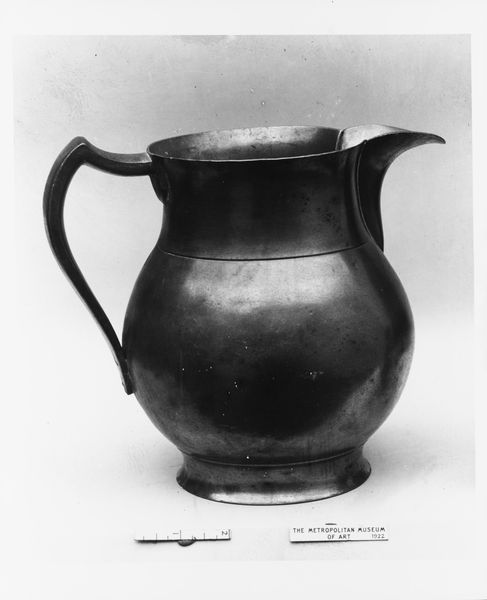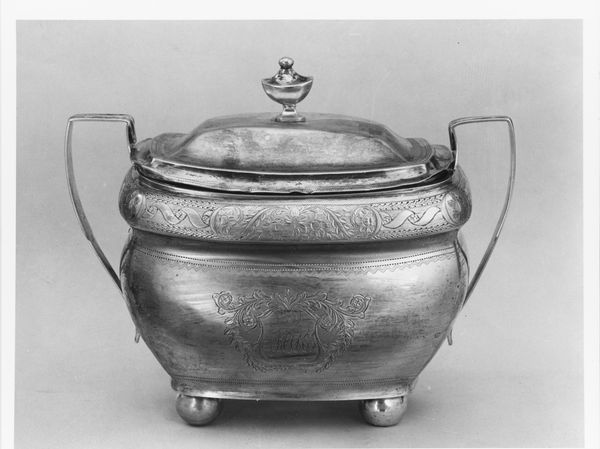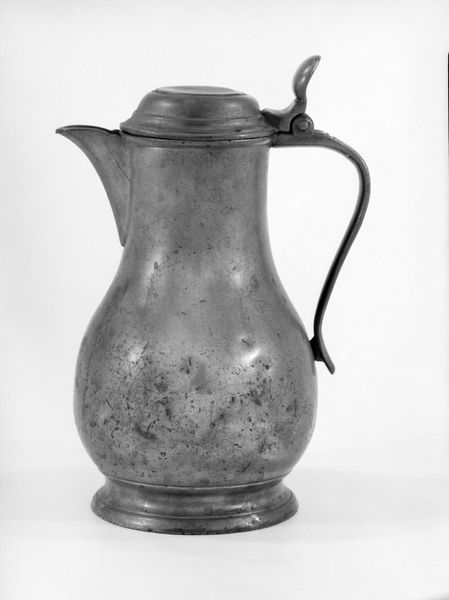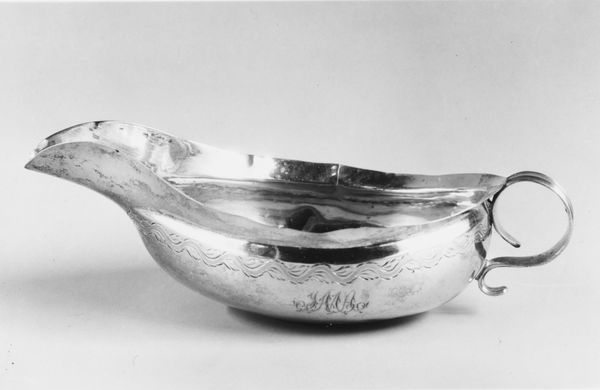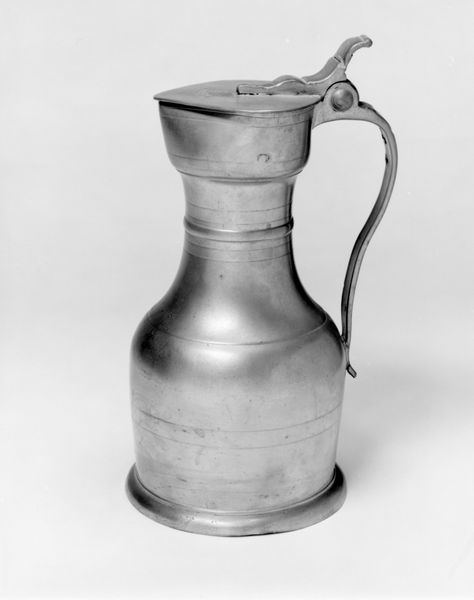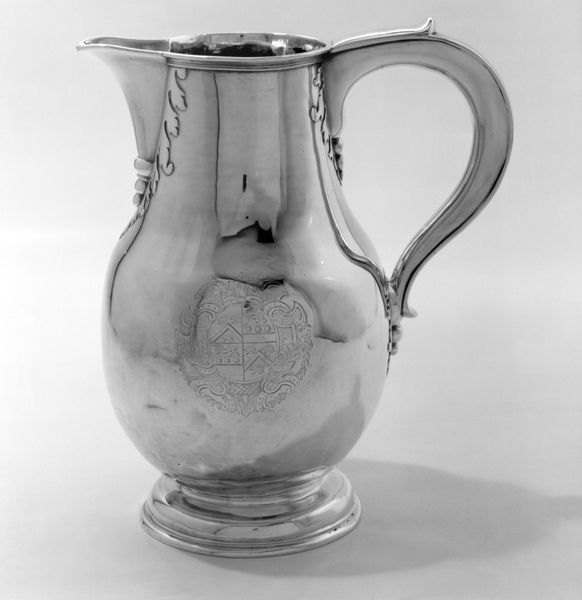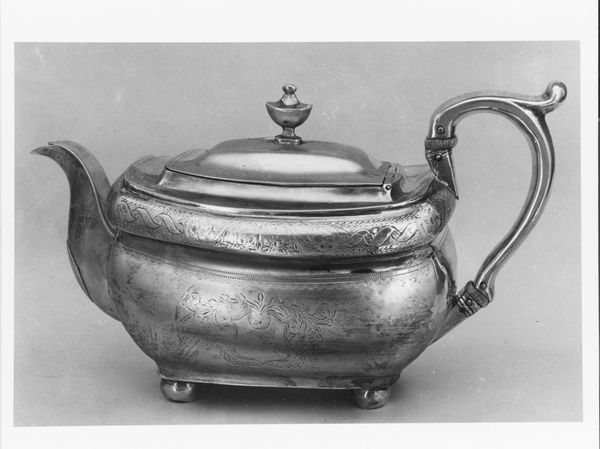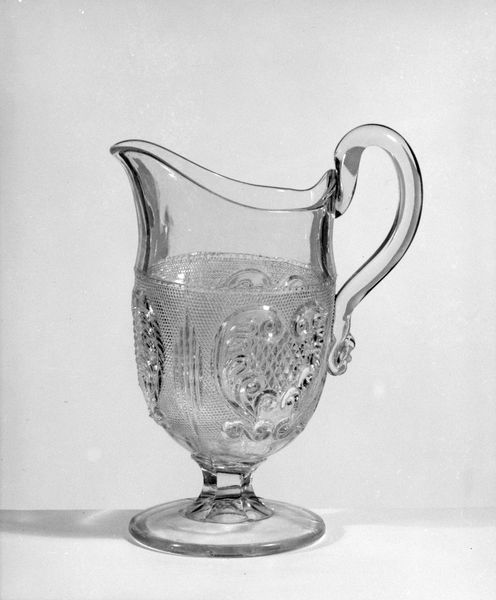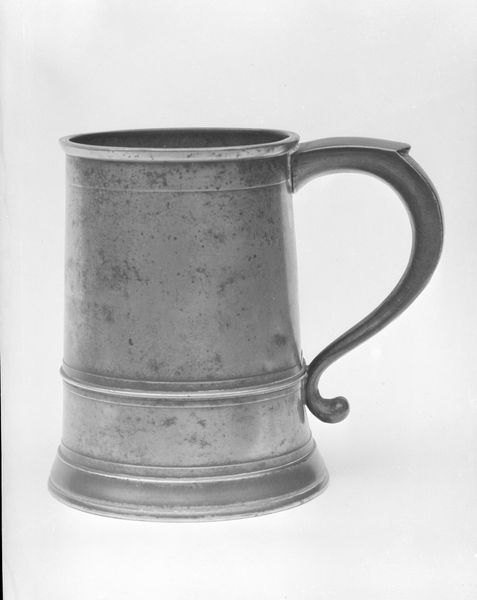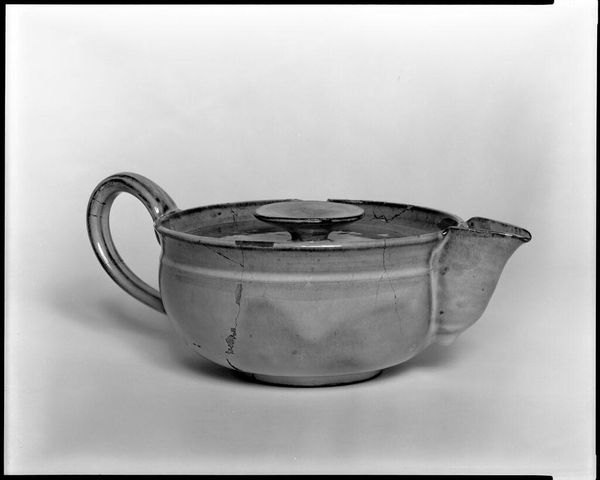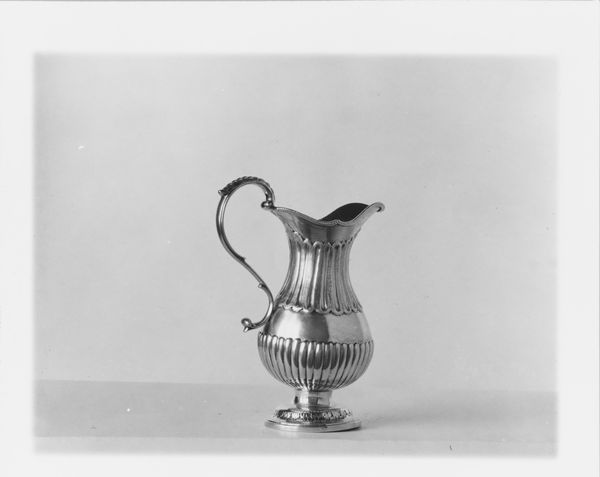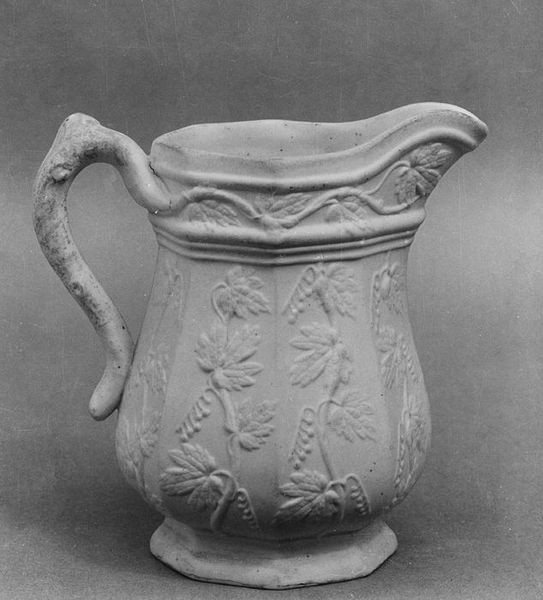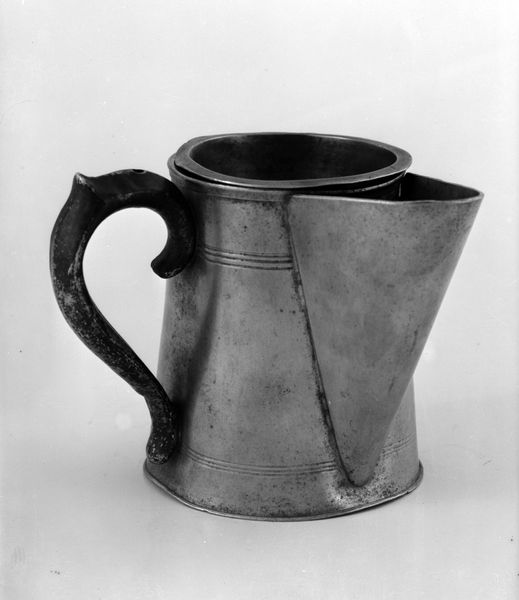
silver, metal, sculpture
#
silver
#
metal
#
sculpture
#
black and white
#
15_18th-century
#
monochrome photography
#
monochrome
#
decorative-art
#
monochrome
Dimensions: 4 5/8 x 5 11/16 x 3 1/8 in. (11.7 x 14.4 x 7.9 cm); 6 oz. 15 dwt. (209.7 g)
Copyright: Public Domain
Curator: Gazing at this monochrome photograph of the Creamer, a silver vessel from between 1800 and 1830, housed here at the Met, I'm immediately struck by its seemingly simple yet subtly rebellious elegance. What's your take, as an artist? Editor: Well, it kinda looks like something from a fairy tale that's seen better days. All those intricate etchings softened and worn down by time, like a whispered secret you can almost hear... but not quite. There's something sad about it, almost like it's waiting for its next story to start. Curator: It’s fascinating you mention a story. Objects like these aren't just decorative. The late 18th and early 19th centuries witnessed significant shifts in social rituals, particularly those surrounding tea and coffee. The Creamer becomes symbolic of those evolving domestic roles. Its silver composition also represents a certain level of access. Who, exactly, did these objects belong to, and whom did their presence exclude? What labor underpinned the crafting of such a vessel? Editor: Hmm, hadn’t thought about that… More than just sad, perhaps a little heavy, considering where that silver probably came from! I get caught up in the surface textures - the delicate swirls chased into the silver, how the light catches in those tiny grooves… a fleeting beauty sitting on top of potentially something much uglier. Curator: Exactly! And it forces us to contend with the uncomfortable truths of the period, especially regarding race and labor. But there's also resistance encoded in the details, often overlooked when considering objects like these. Notice the specific floral patterns – what local narratives are woven into the ostensibly European design? What power dynamics are at play through that assimilation or through mimicry? Editor: You've got me thinking... Those "delicate swirls" could also be thorny defenses, disguising resistance within the expected ornamental design. It could almost be about reclaiming domestic space through subtle disruptions of the prescribed roles! Curator: Precisely. And engaging with art in this way invites reflection and expands the narratives. Thank you, these insights into the materiality of it all and your own aesthetic response were enlightening. Editor: Anytime. Looking at this cream pitcher definitely went from simple aesthetic admiration to something unexpectedly... thought-provoking. Made me rethink cream!
Comments
No comments
Be the first to comment and join the conversation on the ultimate creative platform.

